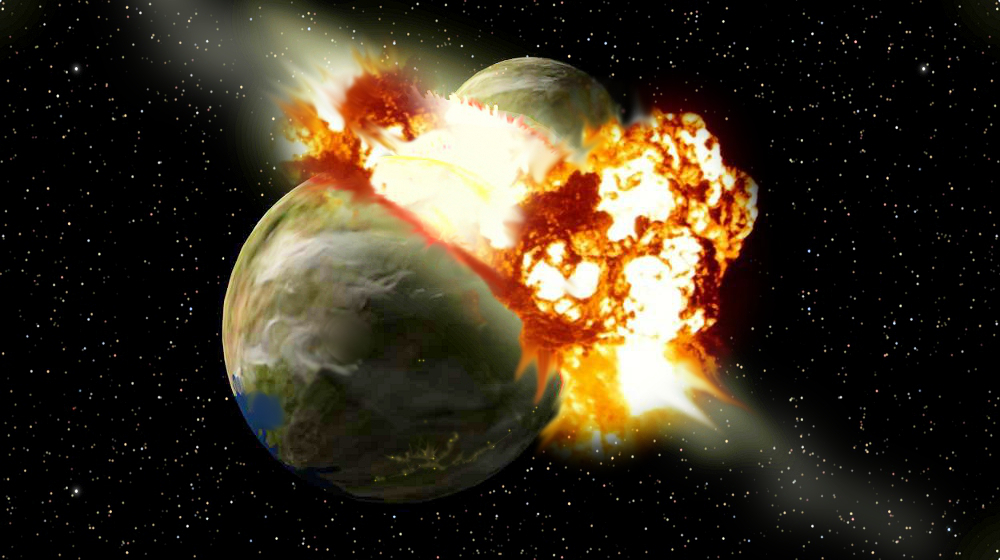17.COULD THERE BE A COLLISION OF THE PLANETS?
When we look up and see the stars and planets filling the sky, we might wonder if there might not be a collision up there some day. But-luckily, this is not likely to happen.
What we don’t realize when we look up is how much farther away certain stars and planets are from the earth than others. To get a better idea of this, let’s consider our solar system and its planets. The planets never escape from the pull or attraction of the sun. They keep on moving around it in orbits that are not quite circles. Their speeds depend on their distances from the sun.
So let’s start by imagining that your own head is the sun, both in its size and location in the solar system. Your head is then in the center of a number of rings of different sizes. These rings are the orbits which the planets travel around the sun.
With your head as the center, Mercury, revolving in the nearest ring, is 6 metres away from you! It is about as big as the dot at the end of this sentence. (Remember, the size of your head is the size of the sun.) Venus moves around in the second ring 11.9 metres away, and is the size of the letter “o”. In the third ring is our own planet, earth, a bit larger than Venus. It is 16 metros from your head (actually 93,000,000 miles or 150,000,000 kilometres away from the sun).
In the fourth ring is Mars, smaller than earth, and 25 metros away. Next we come to Jupiter, the largest of all the planets. In relation to your head (the sun) it looks like a marble, and is as far from your head as the length of a football field! On the sixth ring is Saturn, 12 millimetres in diameter, and nearly twice as far away as Jupiter.
Uranus, 5 millimetres in diameter, is twice as far away as Saturn. Neptune, a little smaller than Uranus, is half as far away again. And Pluto, about half the size of the earth, is eight times as far away as Jupiter. Since each of them goes around you in its orbit without ever changing, you can see why they’re not likely to bump into each other!



Leave a Reply